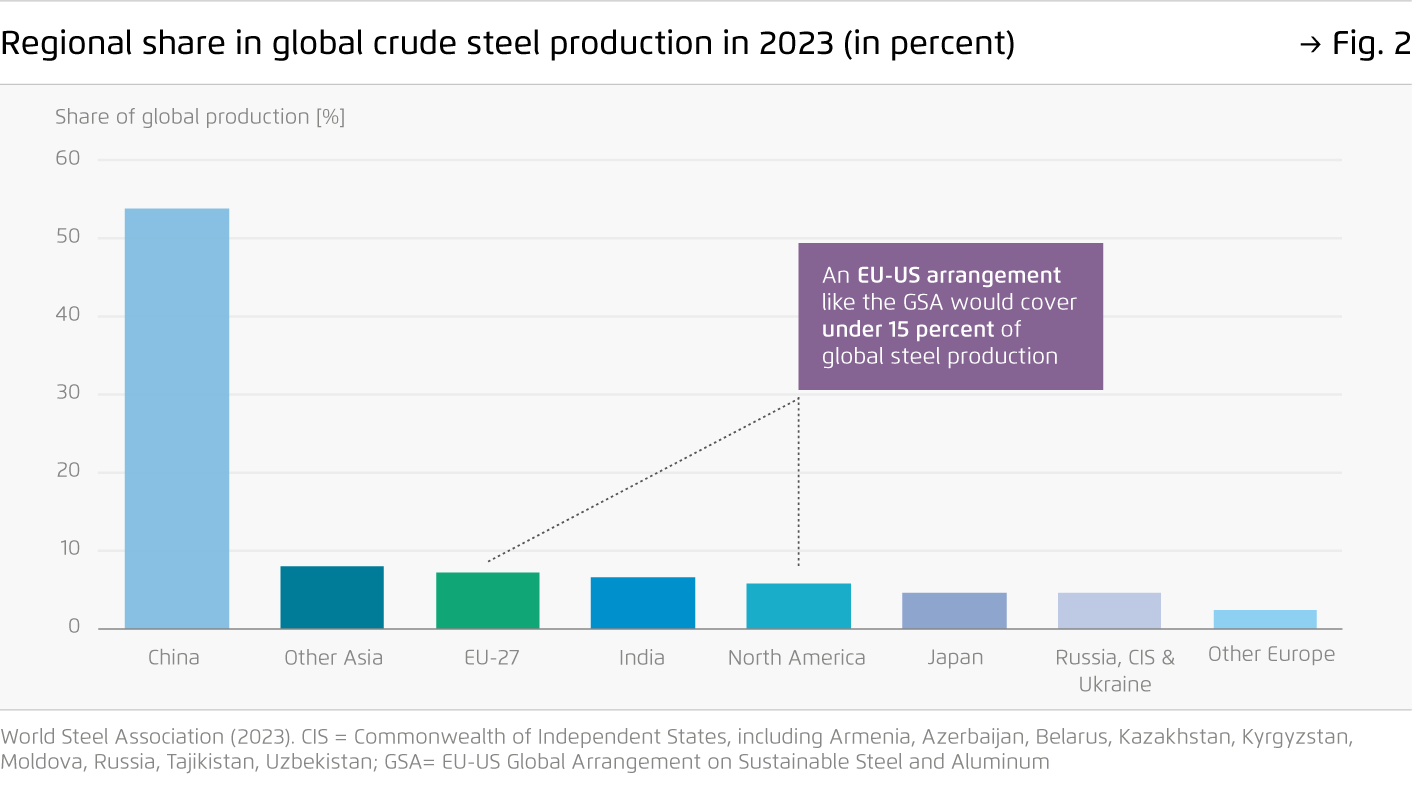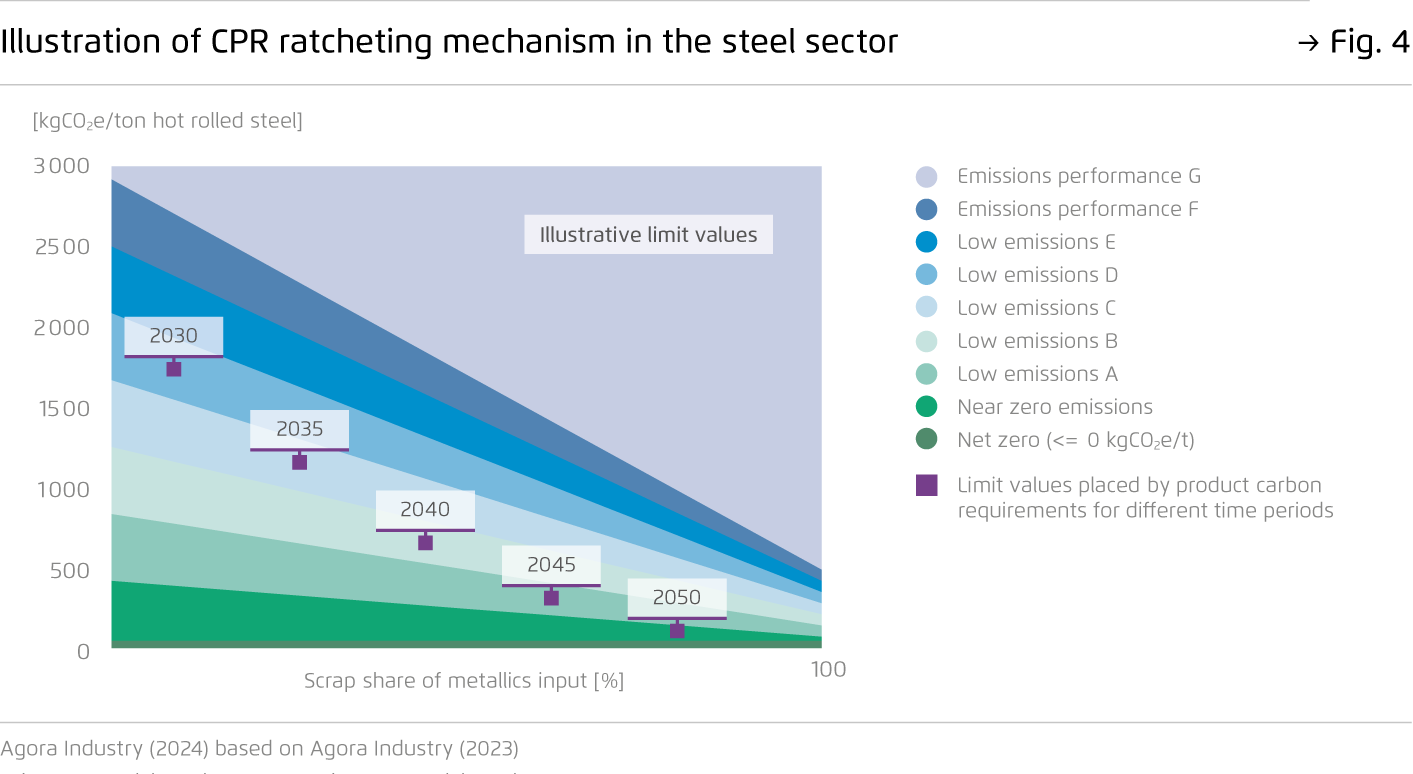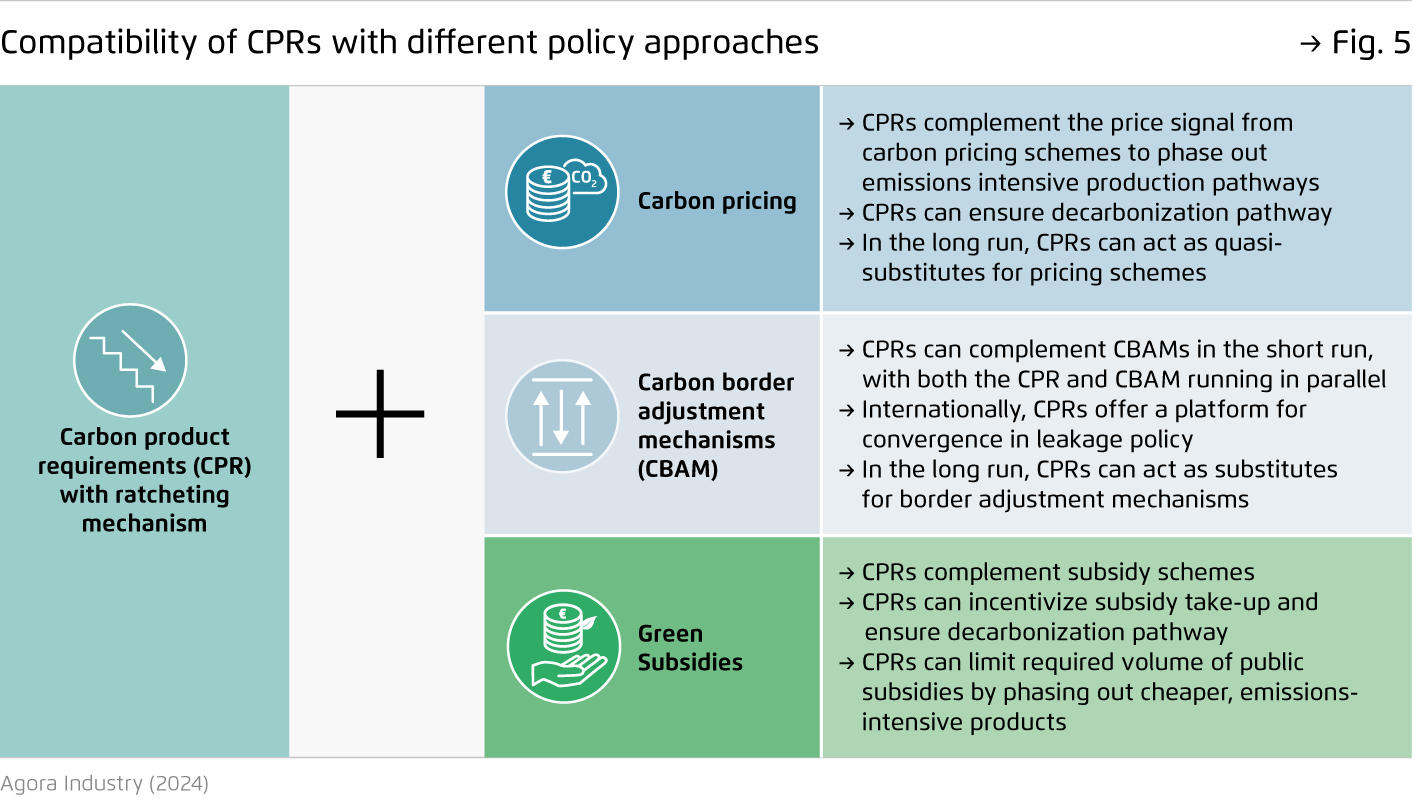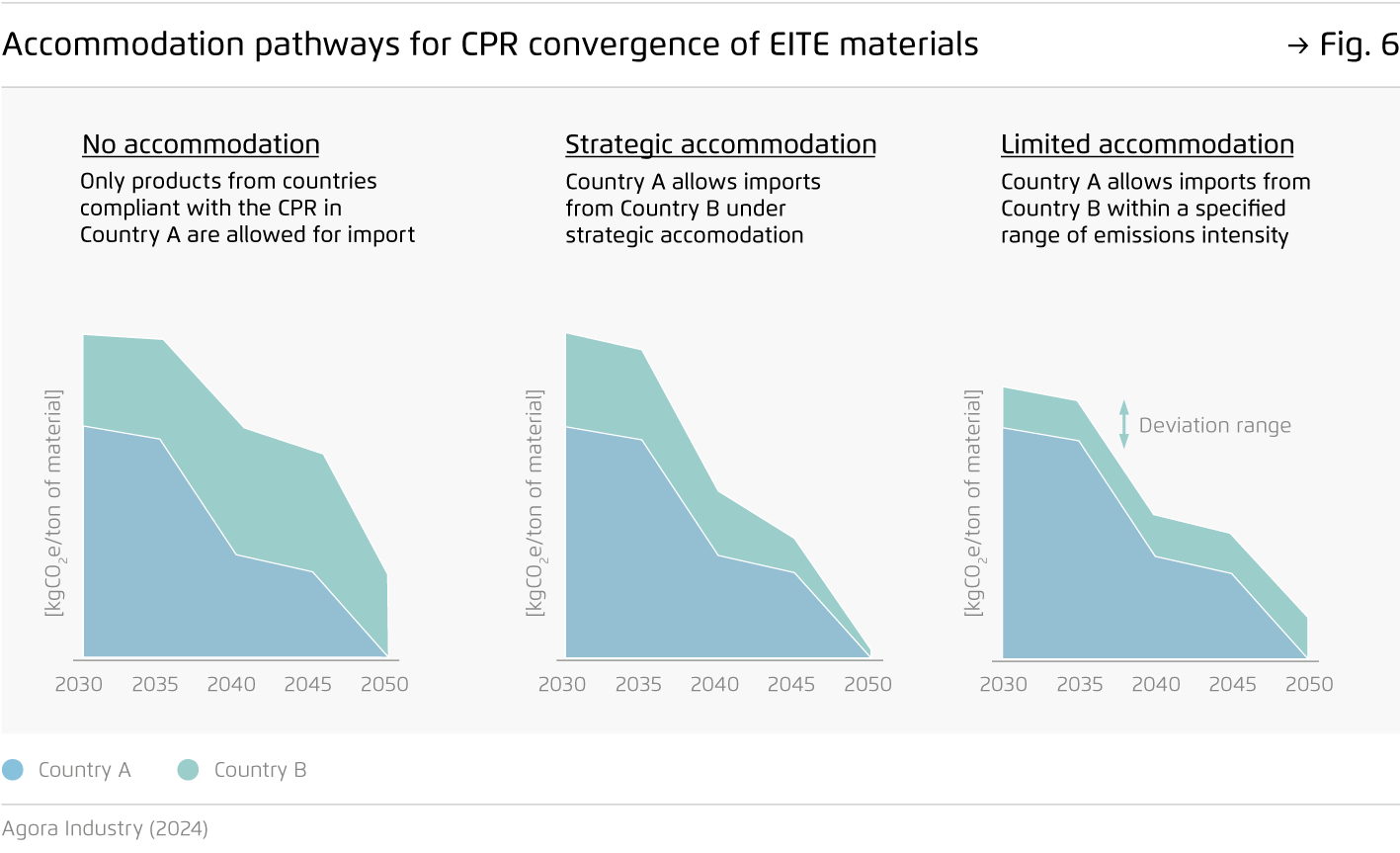-
Countries implement different policy approaches to transform their energy-intensive industries such as steel, cement and chemicals.
An international framework is needed to bridge those divergent strategies and allow countries to align on common targets. Without such a framework, carbon leakage risk will continue to impede industry decarbonisation and risk carbon lock-in.
-
Carbon product requirements (CPRs) can be a platform for global collaboration.
PRs can co-exist with national carbon pricing systems, subsidies and other decarbonisation policies. They can bridge the differences in policy approaches between countries while allowing for joint decarbonization milestones. The stringency of CPRs can easily be increased over time to ensure that carbon-intensive production pathways are phased out.
-
CPRs can accommodate different starting points of emerging and developing economies.
Together with a fit-for-purpose financial architecture targeted at decarbonising industry in developing and emerging economies, such a regime can be an attractive proposal to address their significant risk of carbon lock-in. Therefore, efforts to coordinate on common CPRs need to include the largest producer countries of basic materials.
-
Existing international initiatives should include CPRs in their work programs.
Progress on international emissions measurement standards and labels is an important foundation for CPRs. Existing forums like the Climate Club, Industrial Deep Decarbonization Initiative, G7 and G20 should build on this foundation and work towards phasing out carbon-intensive production through CPRs in parallel to creating global lead markets.
A vision for international trade in CO₂-intensive materials
The role of carbon product requirements

Preface
Countries implement different policy approaches to transform their energy-intensive basic material sectors such as steel, aluminium, cement and chemicals: Some governments put carbon pricing at the centre of their policy mix while others choose to incentivize the transition through green subsidies. In this context of diverging policy approaches, it is difficult for governments to jointly align on common targets for the decarbonisation of their industrial sectors. This is important, because differences in ambition increase the risk of carbon leakage and deters national governments from climate action in these trade-exposed sectors.
An international framework is needed to bridge those divergent strategies and allow countries to converge in their pathways to net-zero. We argue that carbon product requirements (CPRs) for basic materials are a missing puzzle piece in the policy toolkit for industry decarbonization and can be such a platform for global collaboration. They can co-exist with national carbon pricing systems, subsidies and other decarbonisation policies and can be designed to accommodate the different starting points and trajectories of emerging and developing economies.
While green lead markets can strengthen the business case for low-carbon production by creating demand in downstream sectors, carbon product requirements can complement this incentive by regulating the gradual phase-out of carbon-intensive production. In the context of looming re-investment cycles as well as new investment pipelines in emerging and developing economies, a concerted international signal is needed to avoid the significant risk of carbon-lock in for decades to come. Therefore, existing international initiatives such as the Climate Club, Industrial Deep Decarbonization Initiative, the G7 and G20 should include CPRs in their work programs.
Key findings
Bibliographical data
Downloads
-
Impulse
pdf 2 MB
A vision for international trade in CO2-intensive materials
The role of carbon product requirements
-
Impulse
pdf 3 MB
온실가스 집약적 자재의 국제 무역에 관한 비전
탄소제품기준의 역할
All figures in this publication
Three types of policy approaches to reduce industrial emissions
Figure 1 from A vision for international trade in CO₂-intensive materials on page 7
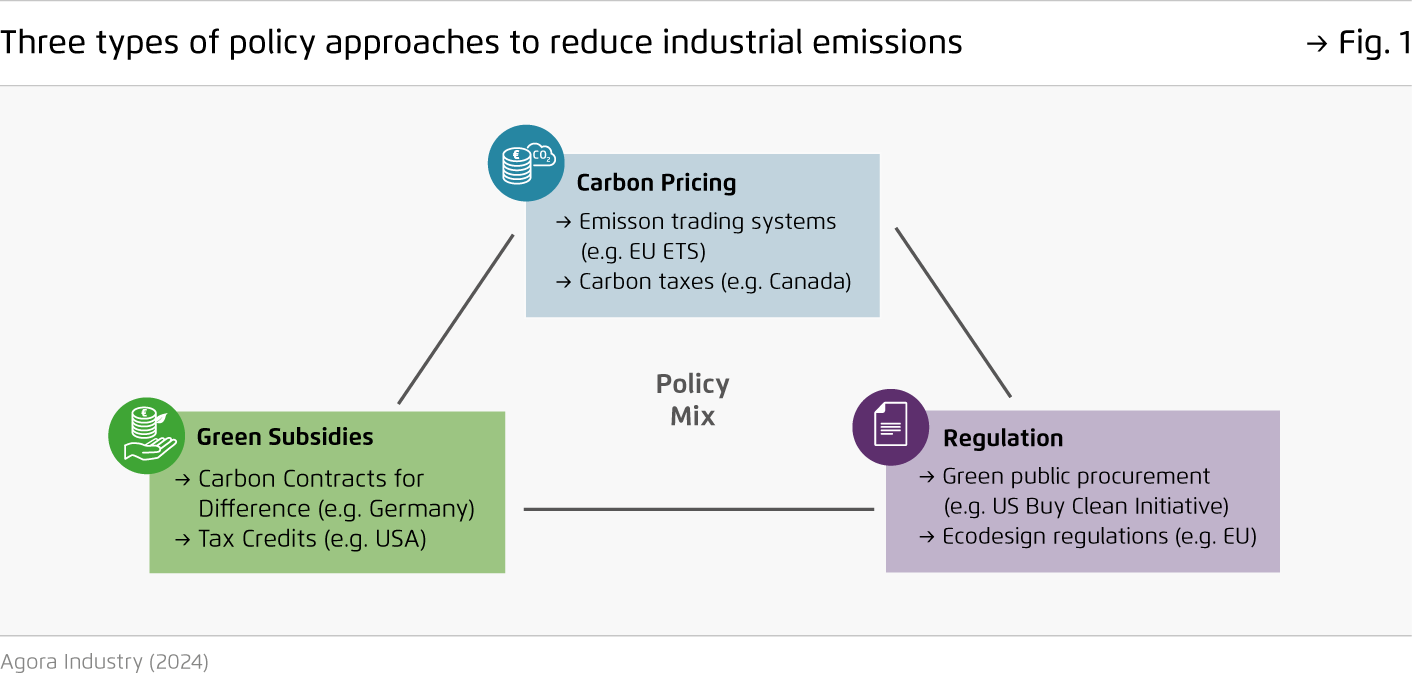
Regional share in global crude steel production in 2023 (in percent)
Figure 2 from A vision for international trade in CO₂-intensive materials on page 10
